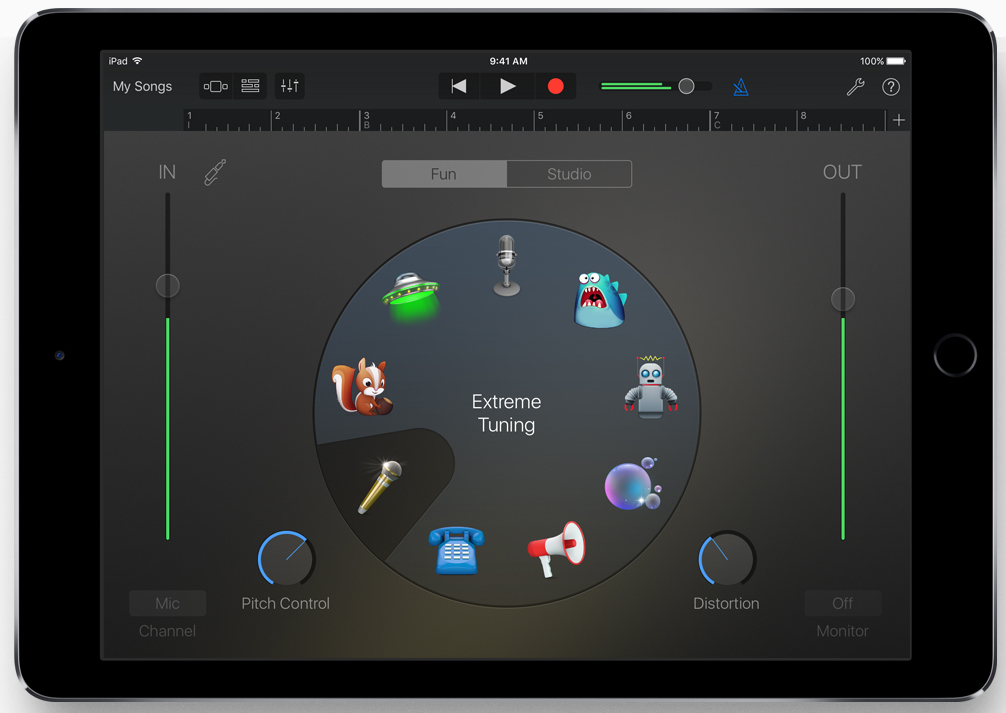Mar 09, 2011 MacBook experience wasn’t the best but it was an MacBook from 09 iPad Pro super impressed! So I can’t wait till I get the iMac Pro! I’m holding an pretty chart rank currently 17th global and 14th national chart rank. Trying to maintain this momentum until the iMac. GarageBand you tha best well tie with logic minus the new samples and loop. Feb 18, 2016 This video is a iPad Pro Music Prouction Review. The 17 top iPad apps for music production of 2017 - Duration. Simple iRig setup with iPad and Garageband iOS - Duration.
GarageBand User Guide for iPad
Using the Audio Recorder, you can record your voice, an instrument, or any other sound using the microphone on your iPad, and play it back in GarageBand. You can also record sounds using an external microphone connected to your iPad.
The Audio Recorder has two sets of controls you can use to change the sound. Fun view lets you quickly change the sound of your recording, while Studio view gives you more options to enhance your recording.
Switch between Fun and Studio view
Tap the Fun or Studio button at the top of the Audio Recorder.

Record a sound
Tap the Record button in the control bar.
Play, sing, or make sound into the microphone.
When you are finish, tap the Play button in the control bar to stop recording. Tap the Play button again to hear your recording.
Adjust the microphone input level
While you record, the In level slider on the left shows the input level from the microphone. If the level turns red, drag the slider down (or record the part again more softly) to prevent distortion.
Drag the In level slider up or down to set the input level.
The In level slider is available if your iPad or input source supports input level control.
If the input device supports left and right channels, tap Channel button under the In level slider, tap Input 1 or Input 2 to select the input channel, or tap Stereo to record in stereo.
Set the input level automatically
When an external microphone or other audio device (such as a headset or an audio interface) is connected to your iPad, the input level can be set automatically.
Tap the Input Settings button , then tap the Automatic switch.
Reduce unwanted noise
You can use a noise gate to reduce low-level input noise when you record. A noise gate cuts off the sound when it falls below a certain minimum level.
Tap the Input Settings button , then turn Noise Gate on.
Drag the Noise Gate slider until the noise stops or decreases to an acceptable level.
Turn on monitoring for an external microphone
When an external microphone or other audio device (such as a headset or an audio interface) is connected to your iPad, the Monitor button under the Out level slider becomes active.
Tap the Monitor button to turn monitoring on. Tap the button again to turn monitoring off.
Change the sound using a preset
The Audio Recorder includes presets that appear after you record a sound. Each preset adds an interesting character to the recorded sound.
Garageband For Ipad Manual
Do one of the following:
In Fun view, tap or turn the dial to select one of the presets.
In Studio view, tap the icon in the middle of the screen and choose a preset from the list.
Turn the knobs to change the sound of the preset.
You can try out different presets by tapping them and turning the knobs.
2017 Ipad Pro 12.9
Set the key and scale for Extreme Tuning
The Extreme Tuning preset is a popular vocal effect that changes the pitch of your recording based on your song’s key and scale settings.

Tap the Settings button , tap Key Signature, then tap a new key or a different scale (major or minor).
If the actual key or scale of your song differs from the key or scale setting, the effect might be less pronounced, or might change the pitch of individual notes in undesirable ways.
2017 Ipad Pro 10.5
Try again after each step
- In the App Store, tap Updates. Find GarageBand in the list. If you see Update next to GarageBand, tap Update. If not, skip this step.
- If you use Audio Units Extensions or Inter-App Audio apps as instruments or effects with GarageBand, check with the manufacturer for updates.
- If you use an external audio interface, disconnect it. If GarageBand works, you might need to update or service your audio interface.
- Delete any Audio Units Extensions or Inter-App Audio apps.
- Create a new song, then play it. If it works, check your other songs and solo tracks to see which one caused the issue.
- Reset GarageBand. Go to Settings > GarageBand, then tap Reset GarageBand. When you reset GarageBand, your song files, presets, or patches aren't affected. Other custom settings, such as the 24-bit audio resolution and Multitrack Recording settings, are reset to factory defaults.
- Back up any songs on your device. Then delete GarageBand and redownload it.
Still not working? Contact Apple support.
How To Use Garageband Ipad
Learn More
- Use GarageBand on your iPhone, iPad, or iPod touch.
- Visit the GarageBand Support page for more articles and support resources for GarageBand.
- Share tips and solutions with fellow GarageBand users from all around the world. Visit the GarageBand for iOS Support Community.